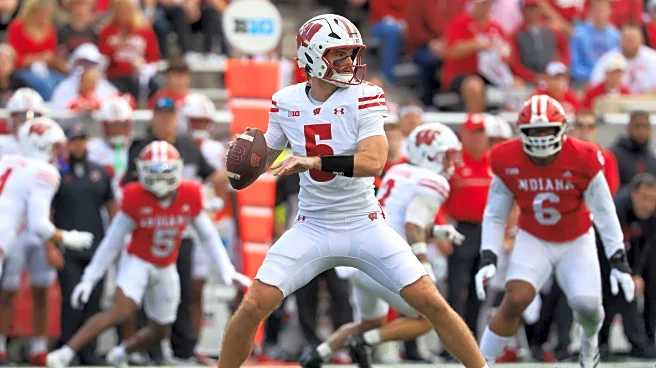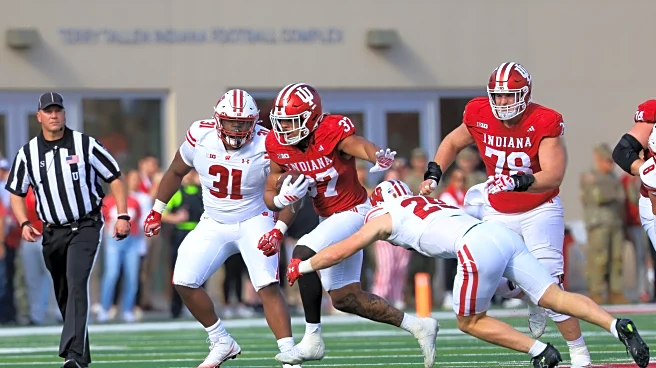The Wisconsin Badgers 31–7 loss to the No. 2 Indiana Hoosiers offered a sobering look at the team’s current challenges but also highlighted some silver linings in a season that has been a rollercoaster.
The game revealed both the potential of a young roster and the areas that need immediate improvement if Wisconsin hopes to compete consistently in the Big Ten.
Quarterback play and offensive identity were central to the story. True freshman Carter Smith made his first career start under heavy road-game pressure. Smith went 9-of-15 for 98 yards and a 45-yard touchdown pass to Lance Mason, showing flashes of arm strength and poise.
Yet he also had two turnovers, which stalled several drives and kept Wisconsin from building momentum. The running game struggled as well, totaling just 70 yards, as Indiana’s defensive front controlled the line of scrimmage.
Without balance and a reliable late-game option, Wisconsin’s offense often stalled, forcing them into high-risk passing situations. This game emphasized the importance of establishing a consistent offensive rhythm and giving Smith the support needed to develop as a leader on the field.
Defensively, the Badgers had moments of effectiveness but were inconsistent. Wisconsin recorded five sacks, including 2.5 by Darryl Peterson III, and applied pressure that occasionally disrupted Indiana’s rhythm.
However, the defense gave up explosive plays, particularly in the second half, allowing Hoosier quarterback Fernando Mendoza to complete 22-of-24 passes for 299 yards and four touchdowns. These big plays underscored lapses in coverage and gap discipline, highlighting a need for sharper rotations and more consistent communication on the field.
Special teams and field position also played a role. Indiana capitalized on opportunities and converted them into points, while Wisconsin failed to generate momentum from kick returns or create scoring opportunities outside of a few standout plays. This gap illustrates the importance of complementary football—defense, offense, and special teams working in sync.
Finally, the game exposed the effects of youth and inexperience. Mistakes at critical moments, combined with inconsistent execution, demonstrated that this Wisconsin team is still learning how to respond under pressure. However, the flashes of talent—Smith’s arm, the defensive aggression, and individual big plays—indicate that the foundation is present. Building consistency and poise, especially on the road, will be essential for the final stretch of the season.
In conclusion, while the scoreboard was disappointing, the game offered valuable lessons. Wisconsin needs to develop offensive balance, tighten defensive discipline, and minimize turnovers.
At the same time, the performance of Smith and other young players provides hope that the team can grow and compete. Learning from a loss like this, and applying those lessons quickly, will define how the Badgers finish the year and lay the groundwork for future success.












